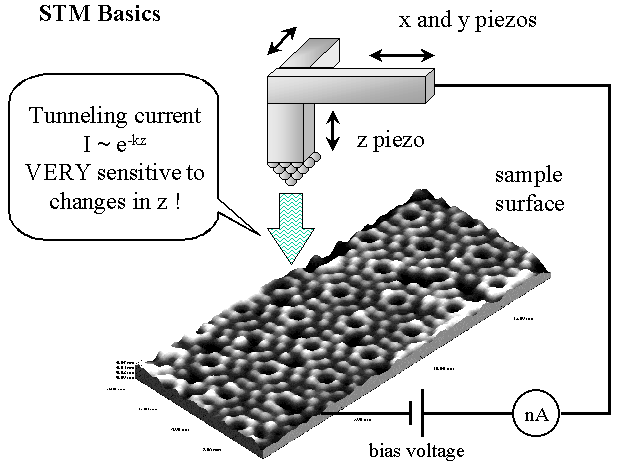Scanning Tunneling Microscopy Basics
The general principle behind Scanning Tunneling Microscopy (STM) is quite elegant. A piezo-electric scanner is used to accurately position an atomically sharp tip above a sample. Changing the position in the lateral (x,y) plane allows to scan continuously across the sample surface and changing the vertical (z) position allows to maintain desired tip-sample distance. If that distance becomes small enough (10–0.1 Angstroms) and voltage is applied between the sample and the tip, the tunneling current (1–0.1 nA) can be observed.

Basic STM setup. An atomically-sharp tip is mounted on 3 piezo crystals that allow precise positioning in 3 directions. Moving in (x,y) plane scans the tip across the sample, z piezo determines the tip-sample distance. Actual STM image of Si(111) surface is used to represent the sample.
The tunneling current depends exponentially on the tip-sample separation. Therefore if a feedback loop is used to adjust the vertical position to keep the current constant (constant current scanning mode) tip-sample separation can be kept constant with great precision. Alternatively, the z-coordinate can be held constant and the tunneling current recorded during an (x,y) scan. Since the current is proportional to the density of electronic states in the sample, the first method maps constant density of states contours and the second method maps the actual density of states.
